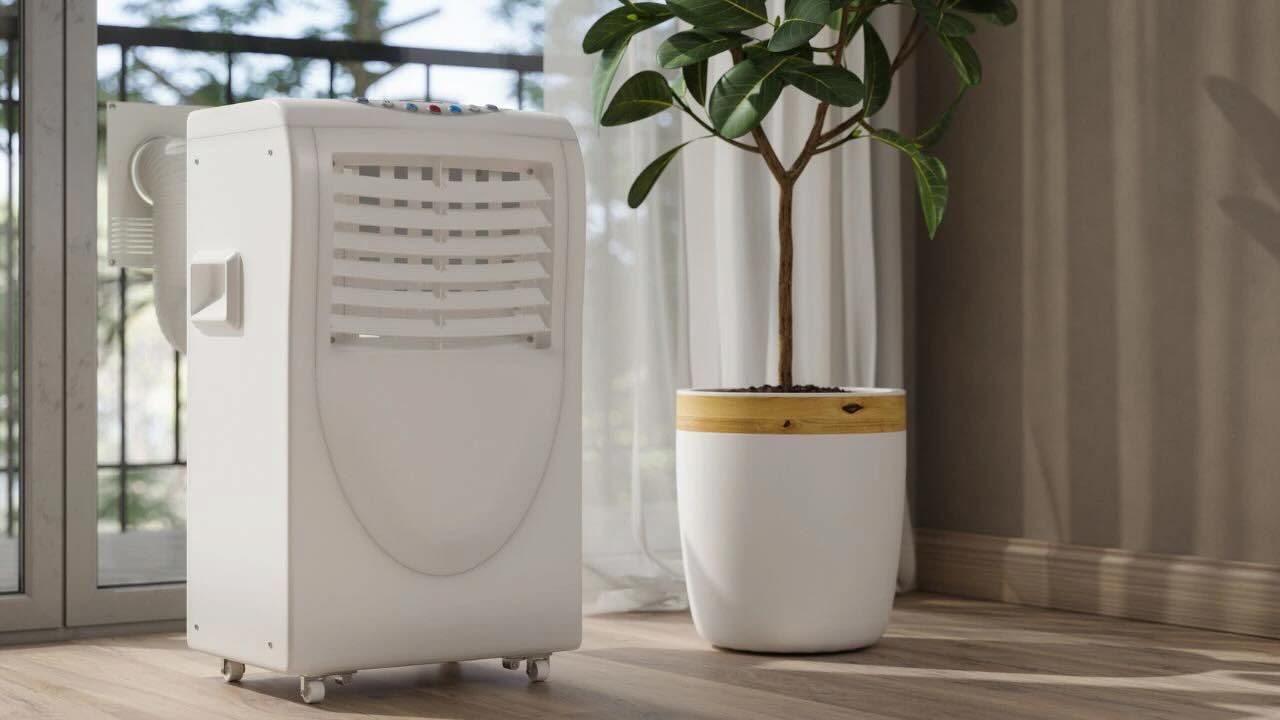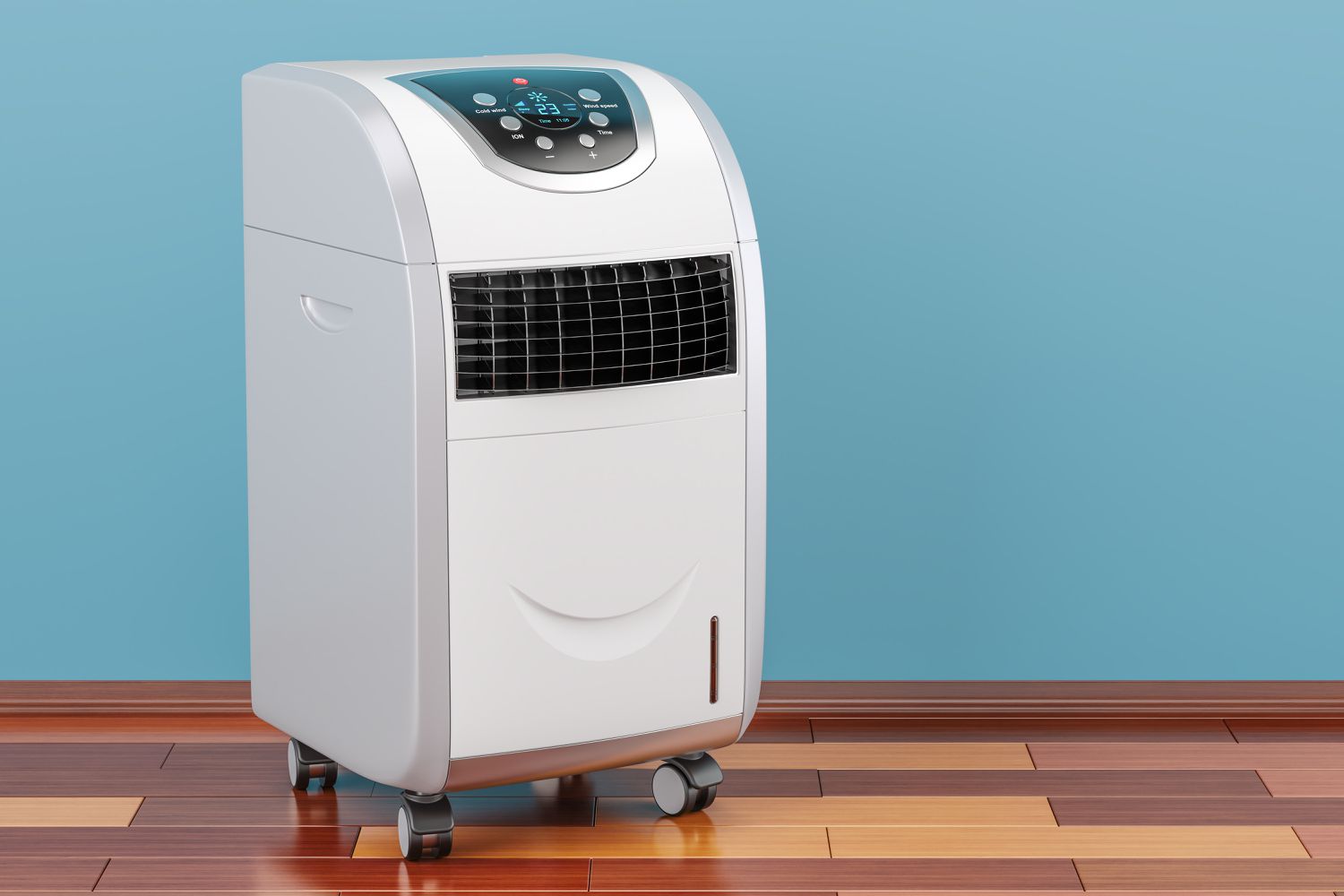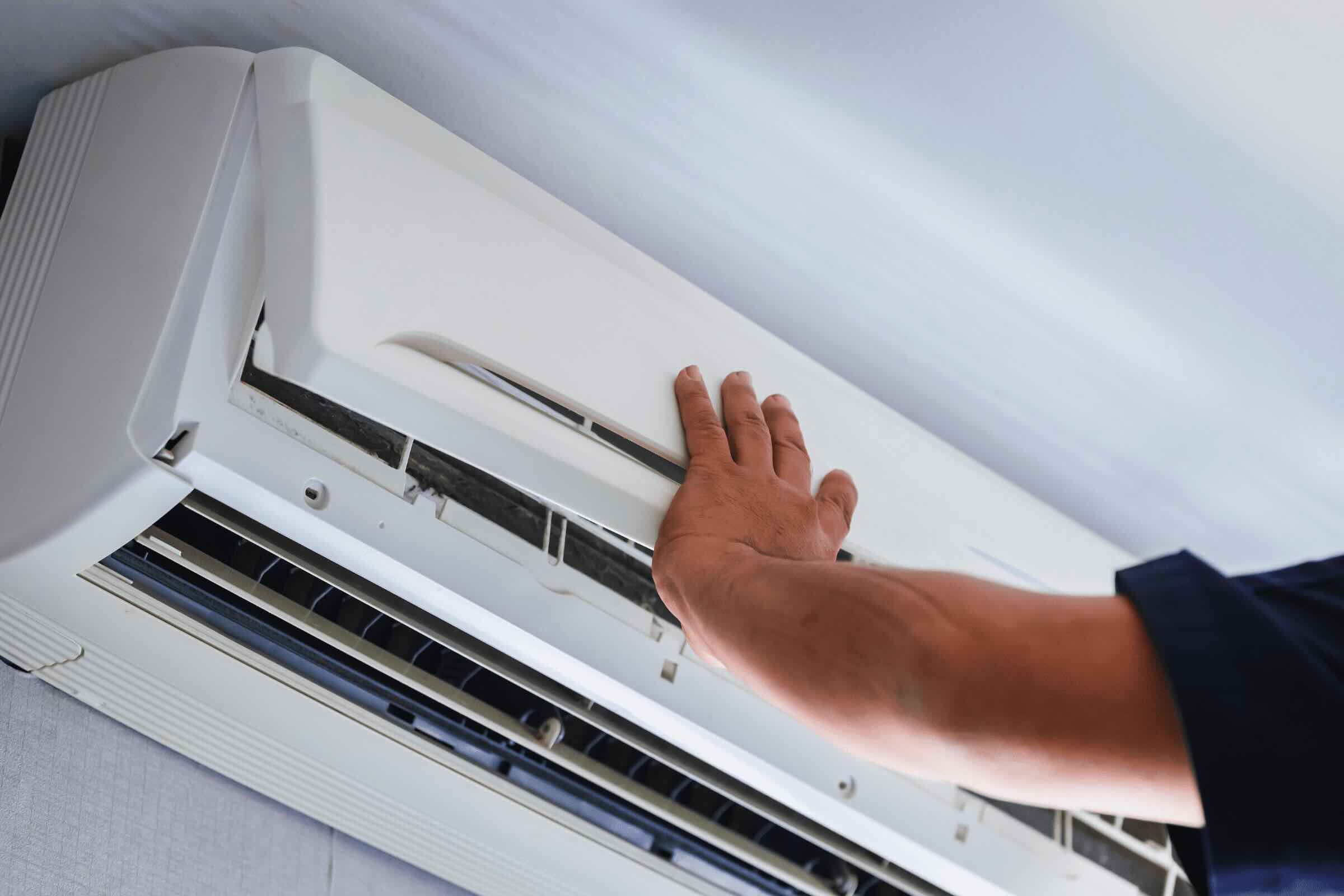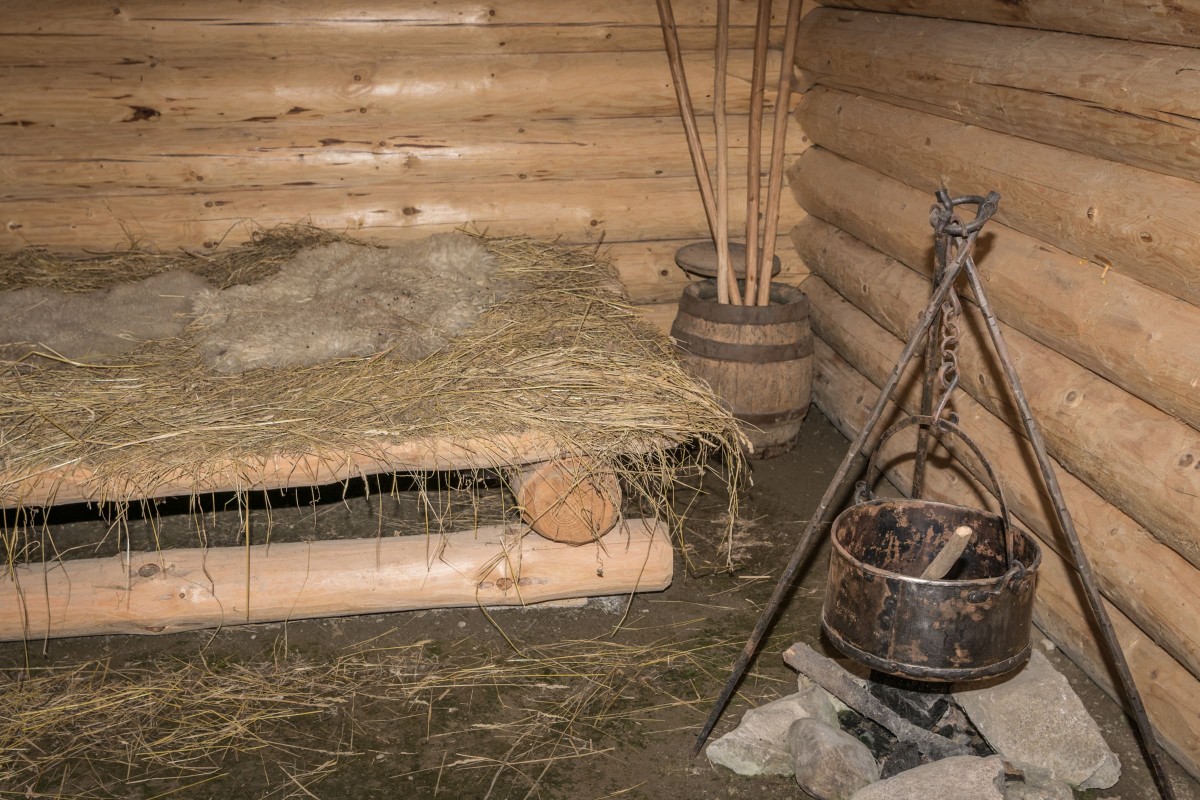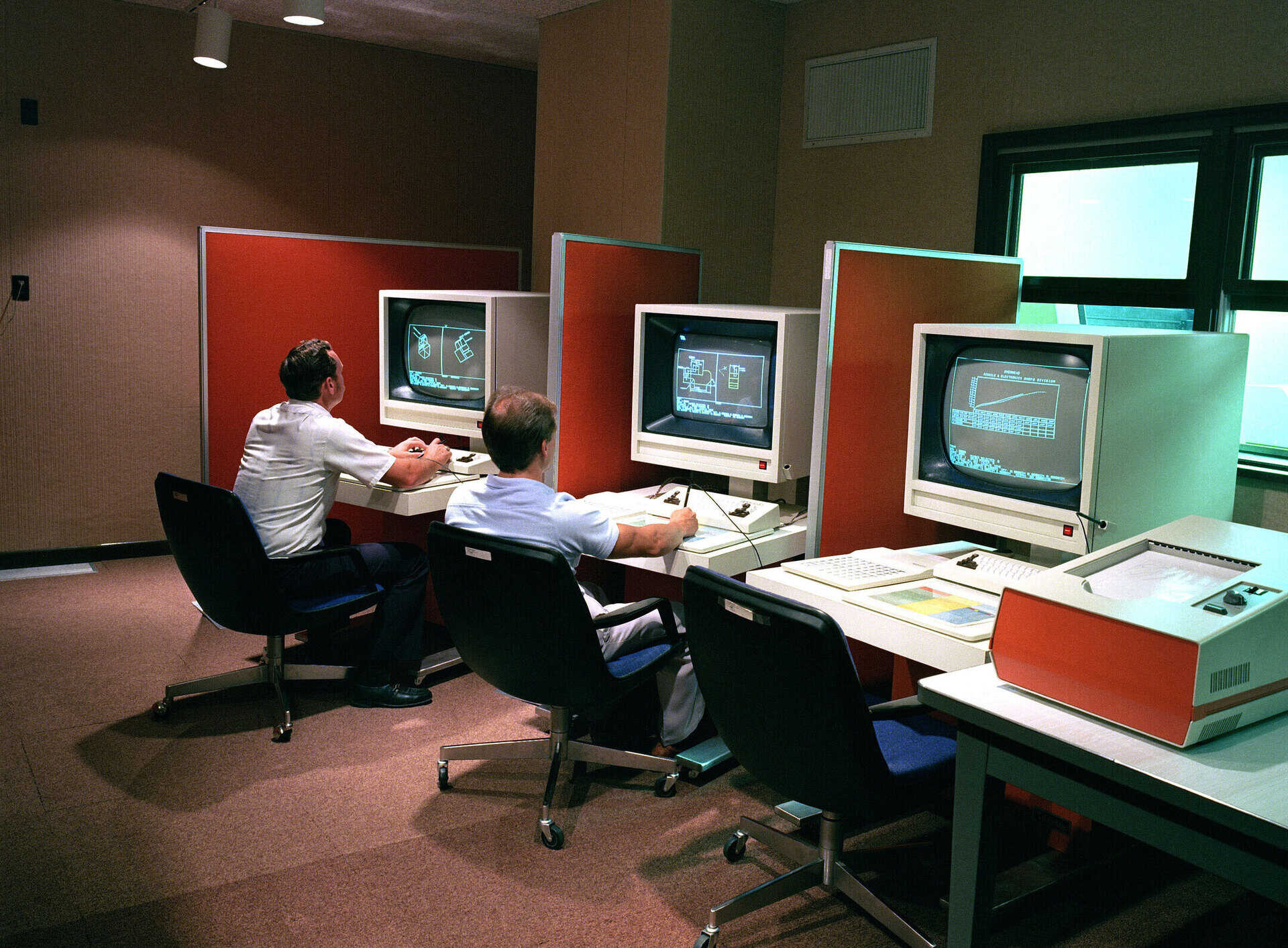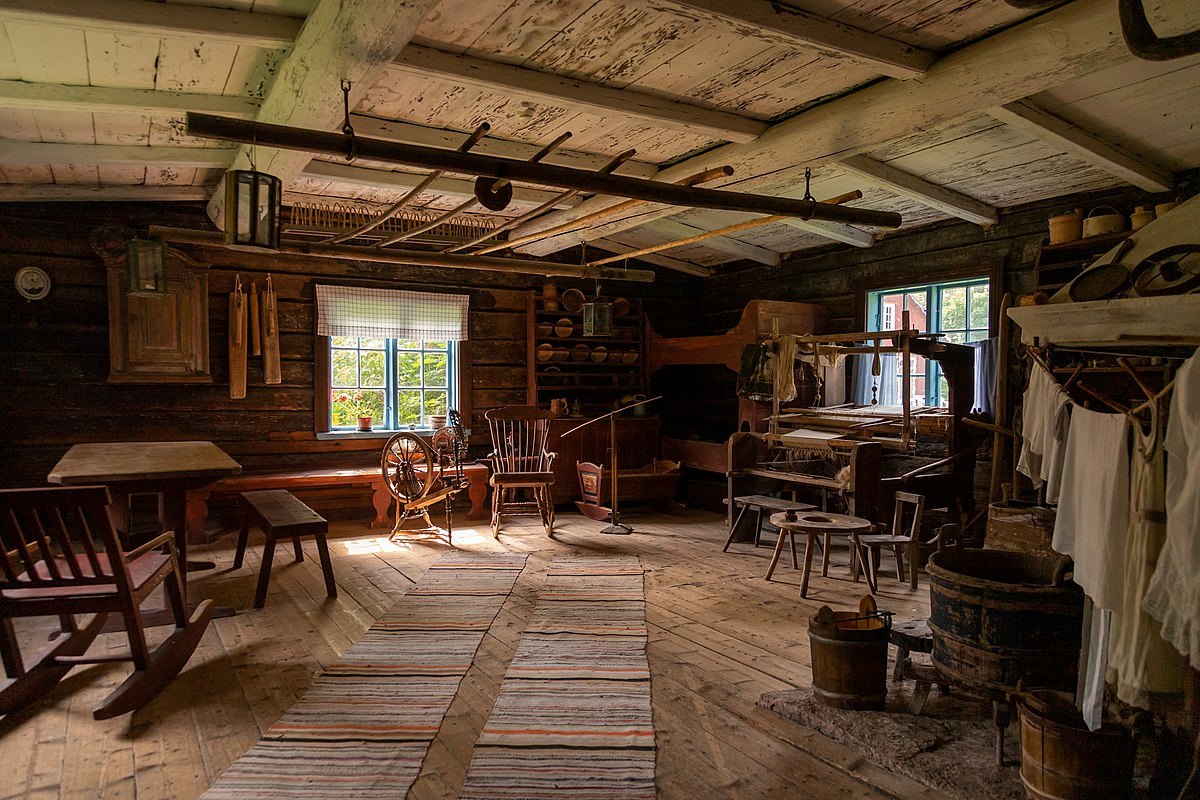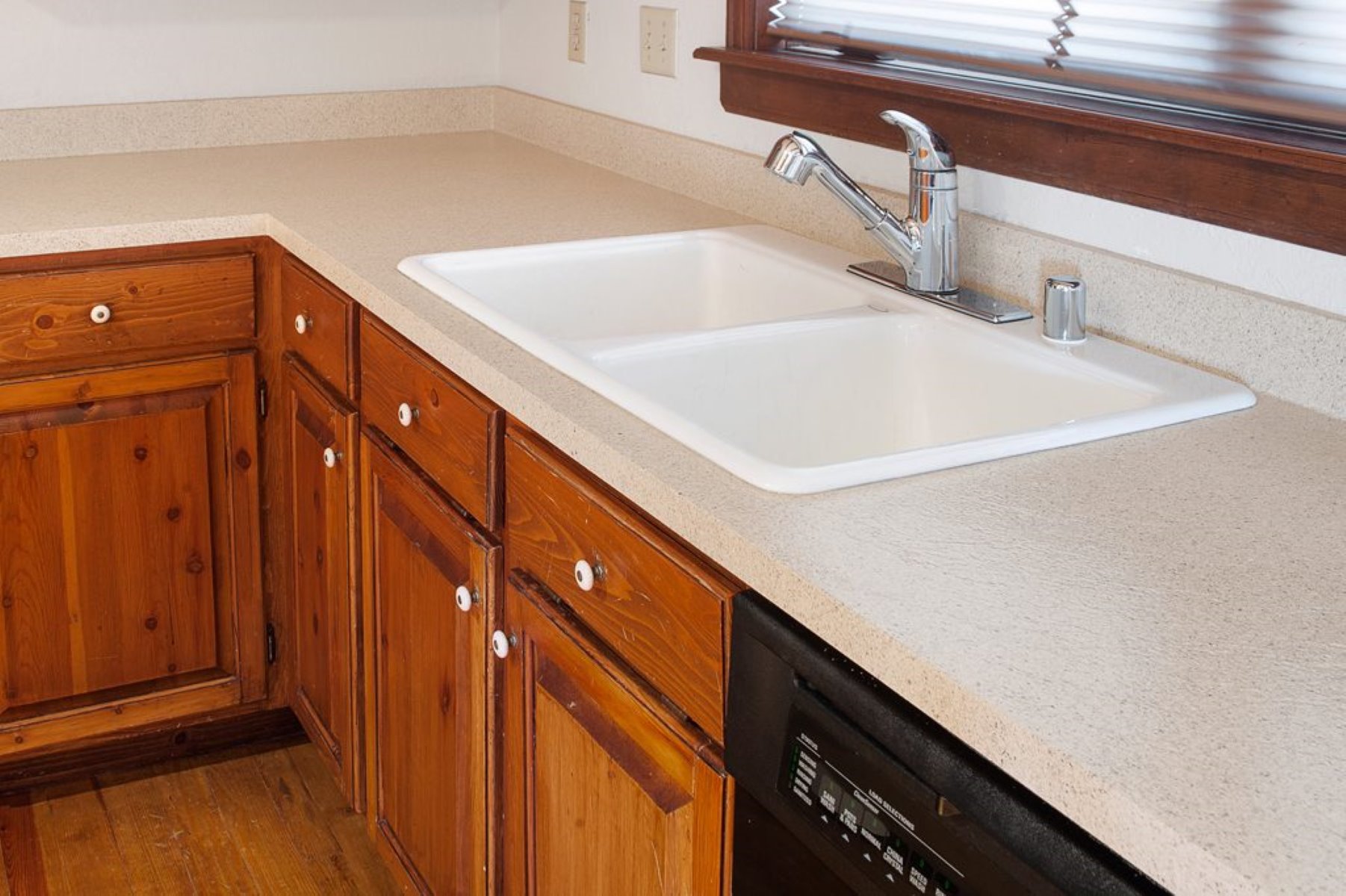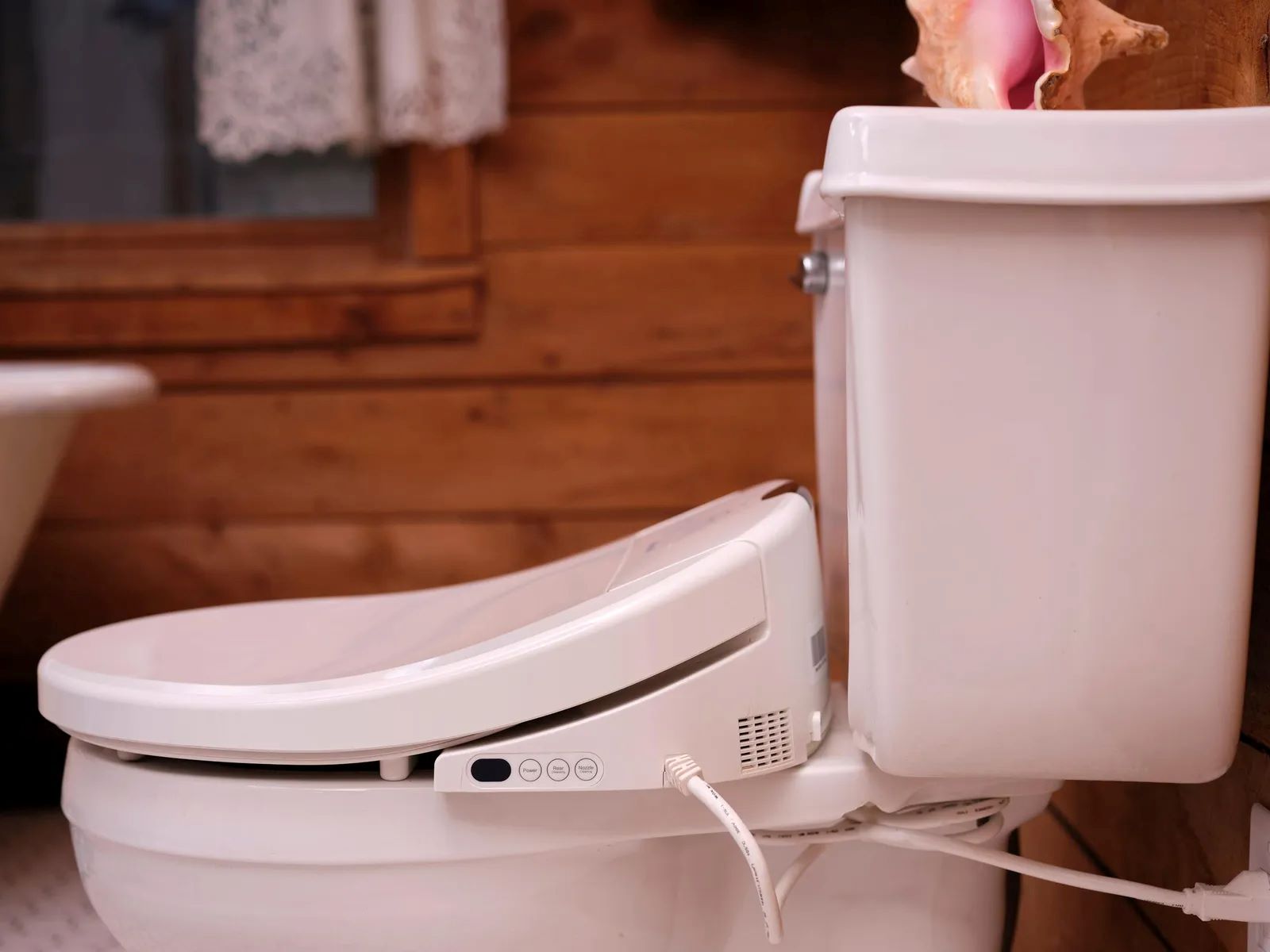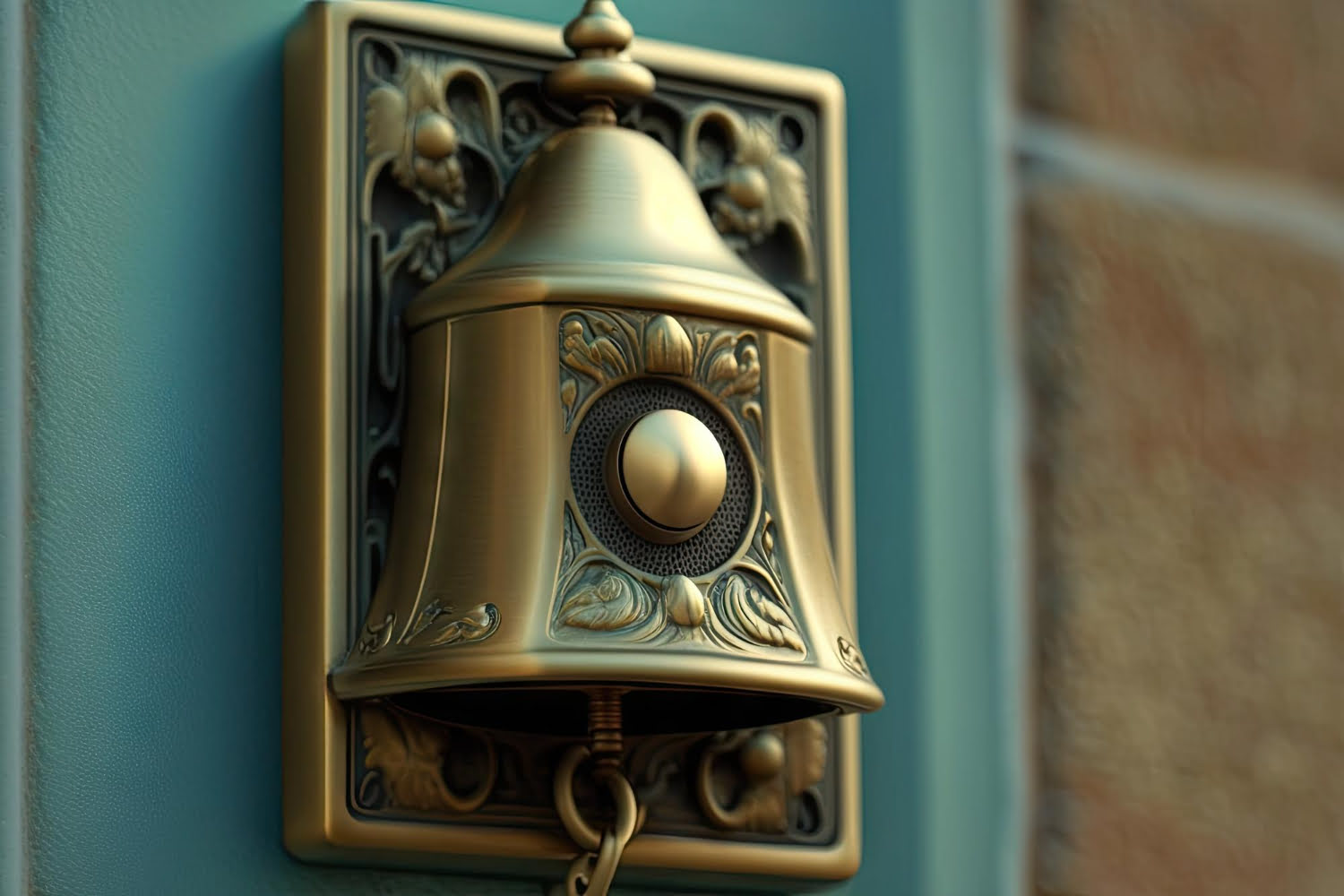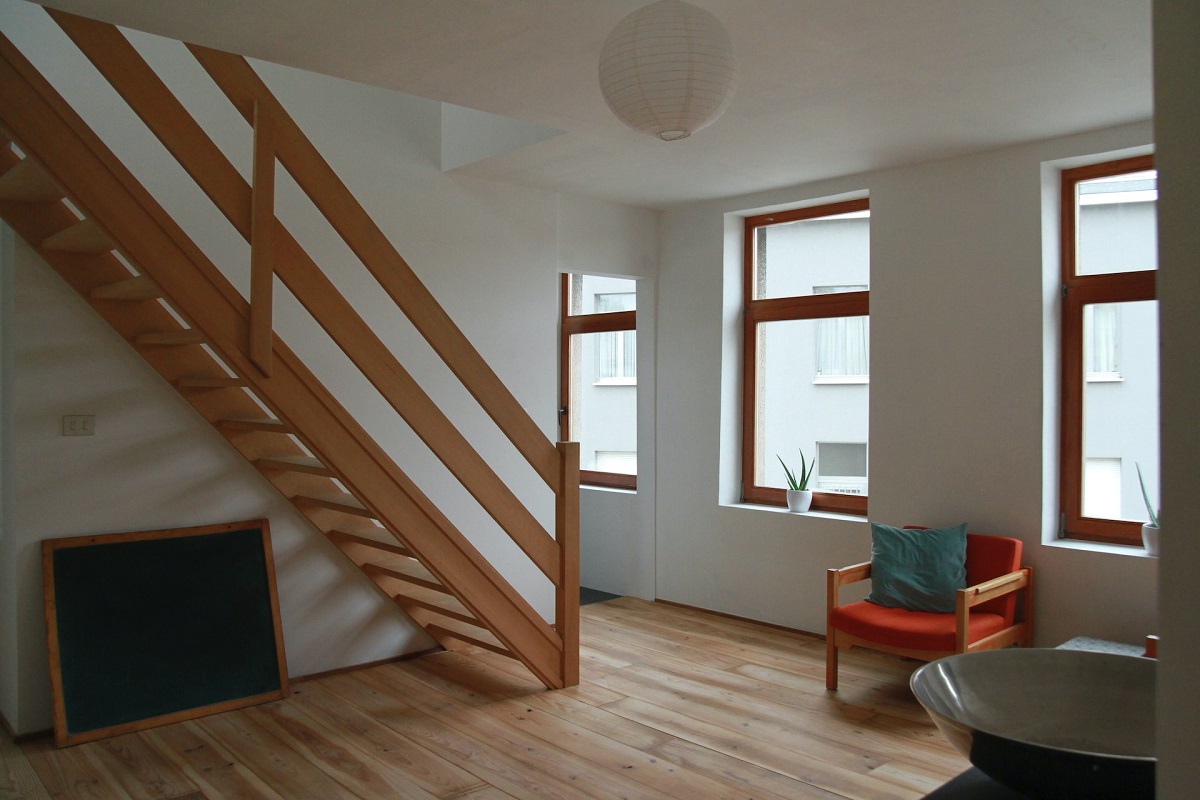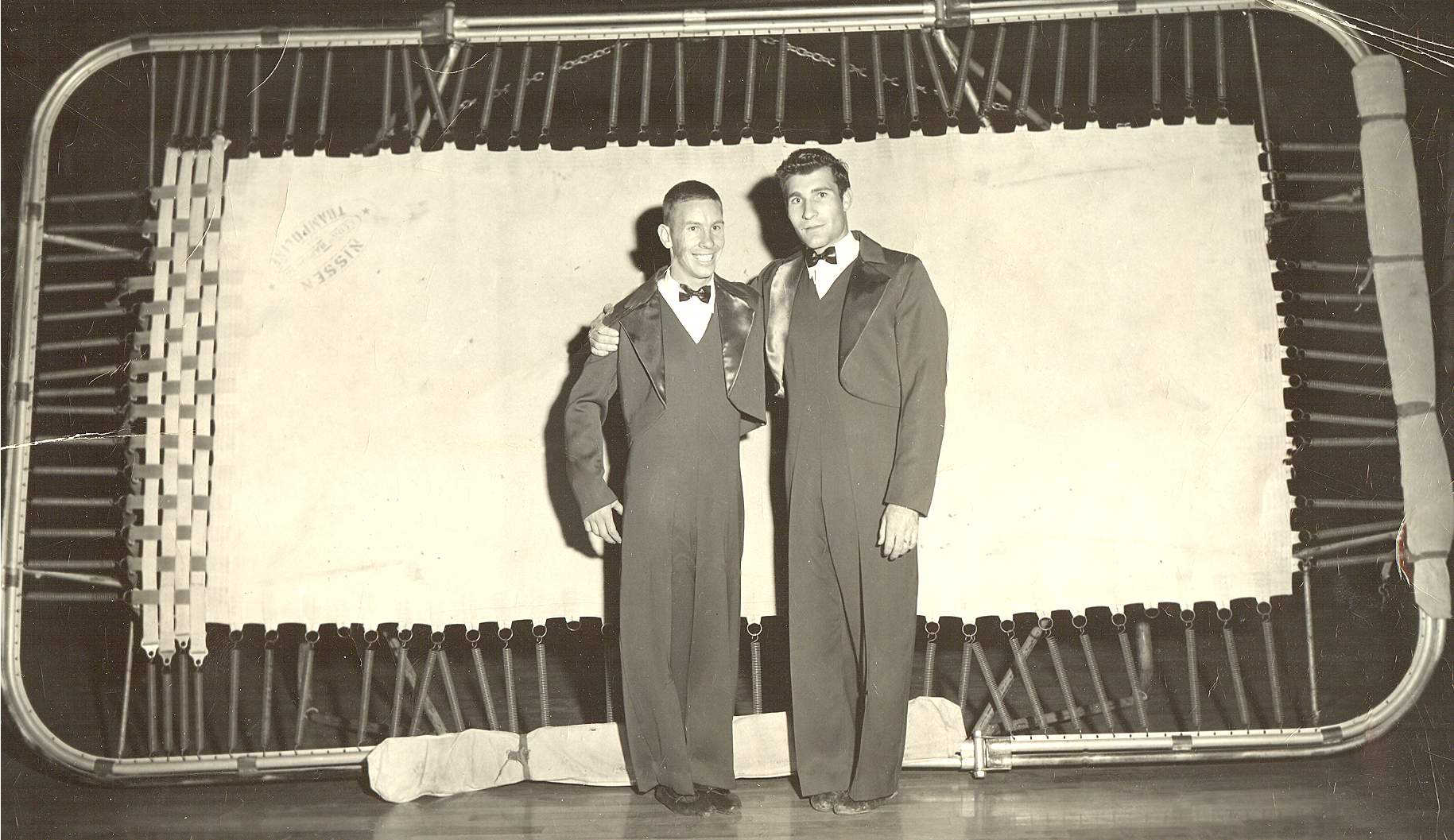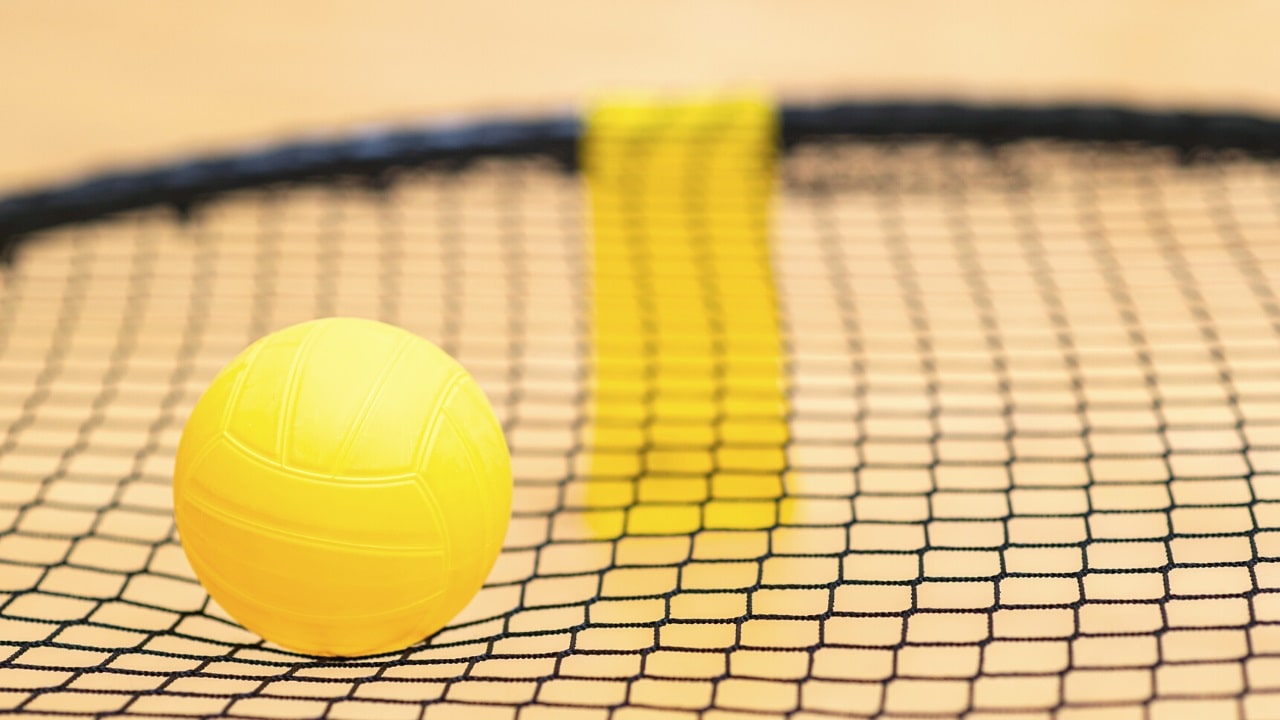Home>Home Maintenance>Who Invented The Portable Air Conditioner
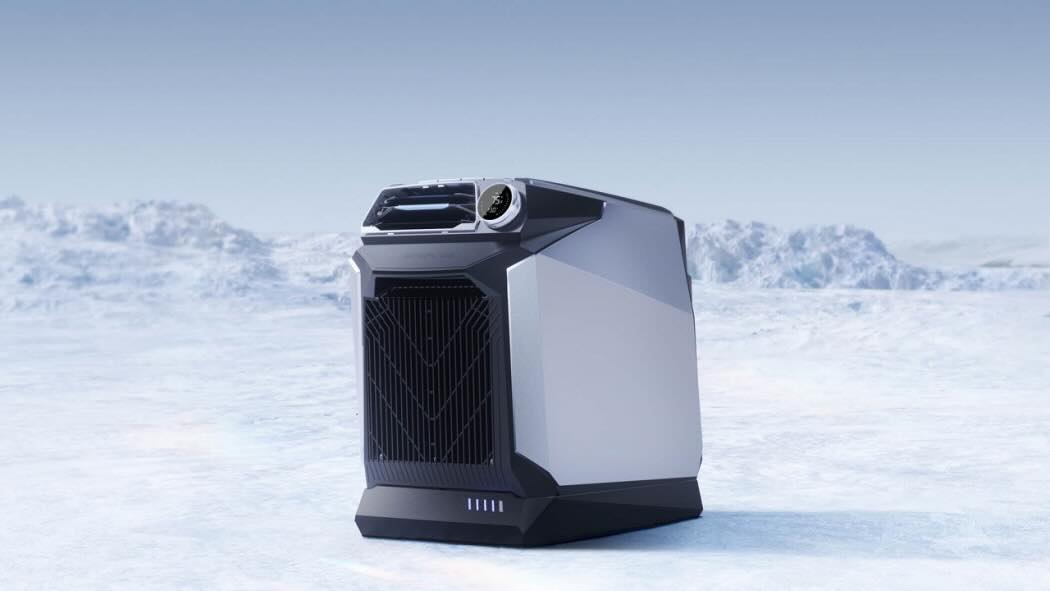

Home Maintenance
Who Invented The Portable Air Conditioner
Modified: March 7, 2024
Discover the inventor of the portable air conditioner and learn about the importance of home maintenance in keeping your cooling system running efficiently.
(Many of the links in this article redirect to a specific reviewed product. Your purchase of these products through affiliate links helps to generate commission for Storables.com, at no extra cost. Learn more)
Introduction
Welcome to the world of home maintenance! In this article, we will dive into the fascinating realm of portable air conditioners. As the summer heat intensifies, it becomes increasingly important to find effective ways to stay cool and comfortable in our homes. Portable air conditioners have revolutionized the way we experience indoor cooling, offering convenience, flexibility, and relief from the sweltering heat.
While central air conditioning systems have long been a popular choice for cooling homes, they often come with a hefty price tag and require extensive installation. Portable air conditioners provide a cost-effective alternative, giving homeowners the freedom to select cooling options that best suit their needs without major renovations or financial burdens.
In this article, we will explore the early inventions for cooling, the necessity for portable air conditioners, the story behind the invention of the portable air conditioner, the impact they have had on our lives, and the advancements in portable air conditioner technology. So, let’s jump right in and discover the fascinating history and practicality of these incredible devices!
Key Takeaways:
- Portable air conditioners were invented to provide a flexible, cost-effective, and energy-efficient cooling solution for homeowners, revolutionizing the way we experience indoor comfort.
- These innovative devices have enhanced our comfort, improved energy efficiency, and offered personalized cooling options, making them a game-changer in home maintenance and the fight against summer heat.
Read more: Who Invented Air Fryer
Early Inventions for Cooling
The pursuit of staying cool during hot summers has been a long-standing endeavor for humanity. Even before the invention of electricity, inventive minds sought ways to beat the heat and create a more comfortable indoor environment.
One of the earliest forms of cooling can be traced back to ancient civilizations, where people utilized various methods such as hand-operated fans and evaporative cooling techniques. Hand fans, typically made from feathers or palm leaves, were used to create a breeze and provide temporary relief from the heat.
In ancient Egypt, the concept of evaporative cooling was employed through the use of porous clay pots filled with water. As the water evaporated through the pores of the pot, it absorbed heat from the surroundings, thus lowering the temperature in the vicinity.
During the Roman Empire, wealthy individuals were known to have utilized aqueducts to circulate cool water through the walls of their homes, creating a rudimentary form of air conditioning. This ancient technique served as a precursor to modern-day coolant systems.
Fast forward to the 19th century, and we witness the emergence of mechanical cooling inventions. In 1758, Benjamin Franklin and John Hadley experimented with the cooling properties of evaporation and invented the first known refrigeration system. Their discovery laid the foundation for the development of modern refrigeration and air conditioning.
In the early 1900s, the advent of electricity brought about a significant shift in the cooling industry. Willis Carrier, often referred to as the “father of air conditioning,” invented the first modern electrical air conditioning system in 1902. Carrier’s invention was primarily designed to control humidity and enhance indoor air quality in industrial settings, such as textile mills and printing plants.
However, it wasn’t until several decades later that cooling technology became accessible to the average homeowner. In the 1930s, window air conditioners made their debut, allowing people to cool individual rooms in their homes. These early models were relatively large and cumbersome, and required the installation of a window unit to expel hot air.
While window air conditioners provided a significant leap forward in indoor cooling, they still lacked the convenience and portability that we associate with modern portable air conditioners. It would take a few more decades of innovation and technological advancements before the true birth of the portable air conditioner.
Now that we have explored the early inventions for cooling, let’s delve into the specific needs that gave rise to portable air conditioners and their invention.
Necessity for Portable Air Conditioners
As the popularity of air conditioning grew in the mid-20th century, homeowners began to desire cooling solutions that offered more flexibility and convenience. While window air conditioners provided localized cooling, they were limited by the need for installation and the inability to move them from one room to another.
It became increasingly clear that there was a need for a cooling system that homeowners could easily transport and use in multiple areas of their homes. This was particularly important for individuals living in apartments or rented spaces where permanent installations were not feasible.
Furthermore, with the rising costs of energy and the desire to reduce carbon footprints, homeowners were seeking energy-efficient alternatives to traditional cooling systems. Portable air conditioners emerged as a viable solution, offering portability, cost-effectiveness, and lower energy consumption compared to central air conditioning units.
Another driving factor behind the necessity for portable air conditioners was the desire for personalized comfort. Not everyone in a household may have the same cooling preferences, and portable units allow individuals to set the temperature to their liking in their specific spaces.
Additionally, as lifestyles evolved, people began to appreciate the flexibility and convenience of being able to move their cooling units to different areas of their homes. Whether it’s a home office during the day, a bedroom at night, or a living room during gatherings, portable air conditioners provide the freedom to tailor cooling to specific needs.
Furthermore, portable air conditioners also play a crucial role in providing temporary cooling solutions. For example, during renovations or home repairs, central air conditioning systems may be temporarily unavailable. In such cases, portable units can be easily installed to provide temporary relief until the permanent system is restored.
Overall, the necessity for portable air conditioners arises from the desire for convenience, flexibility, energy efficiency, personalized comfort, and temporary cooling solutions. These units address the needs of modern homeowners who seek control over their indoor climate without the limitations of traditional cooling systems.
Now that we understand the necessity behind portable air conditioners, let’s delve into the fascinating story of their invention and the impact they have had on our lives.
The Invention of the Portable Air Conditioner
The story behind the invention of the portable air conditioner is filled with ingenuity and a quest for comfort. In the early 1970s, as technological advancements were transforming various industries, a team of engineers and scientists at a private research firm embarked on a mission to develop a portable cooling solution that could cater to the needs of homeowners.
The team recognized the limitations of traditional window units and central air conditioning systems and set out to create a more versatile and portable alternative. After years of research and development, they successfully invented the first commercially viable portable air conditioner, which was designed to be compact, easy to operate, and energy-efficient.
The key innovation behind the portable air conditioner was the incorporation of a self-contained unit that housed the cooling components, including the compressor, condenser, and evaporator, all within one portable device. This eliminated the need for permanent installation, as well as the need for external ductwork or drainage systems.
The portable air conditioner was equipped with wheels and a flexible exhaust hose that could be attached to a window or an opening to expel hot air outside. This design allowed homeowners to move the unit freely between rooms, making it a truly portable cooling solution.
The invention of the portable air conditioner revolutionized domestic cooling, providing homeowners with unprecedented flexibility and convenience. No longer confined to a single room, people could now enjoy cool air in various areas of their homes with the simple movement of a portable unit.
Furthermore, the portable air conditioner was a game-changer for individuals living in rented spaces or apartments. It eliminated the need for permanent modifications to the property, making it accessible to a wider range of individuals who desired effective cooling solutions without the restrictions of traditional systems.
Over the years, the design and technology behind portable air conditioners have continued to evolve. Manufacturers have introduced features such as programmable timers, remote controls, and energy-saving modes to enhance the user experience and improve energy efficiency.
Today, portable air conditioners come in various sizes and cooling capacities, catering to the specific needs of different spaces. They have become a staple in homes, offices, dorm rooms, and even outdoor events, providing cool air wherever it is needed.
The invention of the portable air conditioner has transformed the way we experience indoor cooling. It has redefined comfort and convenience, allowing us to create our own climate-controlled oasis in any room or location.
Now that we understand the invention of the portable air conditioner, let’s explore the impact that these devices have had on our lives.
Willis Haviland Carrier is credited with inventing the first modern electrical air conditioning unit in 1902. However, the first portable air conditioner was invented by a company called Haier in 1986.
The Impact of Portable Air Conditioners
Portable air conditioners have had a profound impact on our lives, transforming the way we experience comfort and coolness in our homes and beyond. Let’s explore some of the key ways in which these devices have made a lasting impact:
1. Enhanced Comfort: Portable air conditioners have brought unparalleled comfort to our living spaces. No longer do we have to endure sweltering heat during summer months or rely solely on ceiling fans. With portable units, we can create customized cool zones in different areas of our homes, ensuring optimal comfort levels for everyone.
2. Flexibility and Convenience: One of the greatest advantages of portable air conditioners is their flexibility. Unlike traditional cooling systems, which are fixed in place, portable units can be easily moved from room to room. This means that we can enjoy cool air wherever we go, whether it’s the living room during the day or the bedroom at night.
3. Energy Efficiency: Energy efficiency has become a top priority for homeowners, and portable air conditioners have answered this call. These devices are designed to be highly efficient, consuming less energy compared to central air conditioning systems. This not only saves money on energy bills but also reduces our carbon footprint and contributes to a more sustainable future.
4. Cost-Effective: Installing a central air conditioning system can be a significant financial investment. Portable air conditioners offer a cost-effective alternative, allowing homeowners to cool specific areas of their homes without the need for extensive installations or modifications. This affordability makes them accessible to a wider range of individuals.
5. Versatile Usage: Portable air conditioners are not limited to residential use alone. They have found applications in offices, rental properties, dorm rooms, RVs, and even outdoor events. Their versatility allows for cooling in a variety of settings, offering comfort and relief wherever needed.
6. Temporary Cooling Solutions: During renovations or in situations where central air conditioning is unavailable or disrupted, portable units can provide temporary cooling solutions. They can be quickly installed and removed, ensuring uninterrupted comfort until the permanent cooling system is restored.
7. Improved Indoor Air Quality: Portable air conditioners not only cool the air but also help improve indoor air quality. Many units come with built-in air filters that remove dust, allergens, and other impurities from the air, creating a healthier living environment.
8. Remote Control and Smart Features: Modern portable air conditioners come equipped with remote controls and smart features, enabling convenient operation from a distance. Some models even have Wi-Fi connectivity, allowing users to control the unit through their smartphones, enhancing ease of use and convenience.
9. Better Sleep Quality: Sleep is essential for our well-being, and portable air conditioners have played a role in improving sleep quality. By maintaining a cool and comfortable sleeping environment, these units promote a restful night’s sleep, leading to increased productivity and overall well-being.
The impact of portable air conditioners extends far beyond mere coolness. They have revolutionized the way we experience indoor comfort, providing convenience, energy efficiency, and improved air quality. As technology continues to advance, we can expect even more innovations that will further enhance our cooling experience.
Now, let’s take a look at the advancements in portable air conditioner technology and how they are shaping the future of home maintenance.
Read more: How To Install A Portable Air Conditioner
Advancements in Portable Air Conditioner Technology
Advancements in portable air conditioner technology have brought about significant improvements in terms of efficiency, performance, and user experience. As we strive for more sustainable and convenient cooling solutions, manufacturers continue to innovate and incorporate new features. Let’s explore some of the key advancements:
1. Energy Efficiency: With the increasing focus on energy conservation, portable air conditioners have become more energy-efficient than ever before. Manufacturers have developed models with advanced compressor technology, improved insulation, and optimized airflow systems to maximize cooling efficiency while minimizing energy consumption. These advancements not only help reduce carbon emissions but also result in cost savings for users.
2. Dual Hose Systems: One of the key challenges with single hose portable air conditioners was the exchange of air with the surrounding environment. Dual hose systems were introduced to address this issue. These units feature two separate hoses – one to intake air from the outdoors and the other to exhaust hot air outside. This design helps maintain a balanced airflow, improves cooling efficiency, and prevents negative pressure build-up within the room.
3. Smart Features: The integration of smart technology has transformed portable air conditioners into intelligent and user-friendly devices. Many models now come with Wi-Fi connectivity, allowing users to control and monitor their units remotely through smartphone apps. They can adjust temperature settings, set timers, and even receive notifications and alerts for maintenance or filter replacement. These smart features provide convenience and enhance the overall user experience.
4. Eco-Friendly Refrigerants: To comply with environmental regulations and reduce greenhouse gas emissions, manufacturers have transitioned from using ozone-depleting refrigerants to more eco-friendly alternatives. Hydrofluorocarbon (HFC) refrigerants, such as R410A, are widely used in modern portable air conditioners. These refrigerants have a lower impact on the ozone layer and contribute to reducing the carbon footprint of cooling systems.
5. Improved Air Filtration: Indoor air quality is a growing concern, and portable air conditioners have responded to this by incorporating advanced filtration systems. Many units now feature multiple layers of filters to capture dust, pollen, pet dander, and other allergens. Some models even use activated carbon filters or ionizers to remove odors and improve the overall air quality in the room.
6. Noise Reduction Technology: Portable air conditioners have come a long way in terms of noise levels. Manufacturers have invested in noise reduction technology, including sound-insulated compressor compartments, vibration dampening features, and quiet fan blades. These advancements help minimize operational noise and allow for a more peaceful and undisturbed indoor environment.
7. Compact and Sleek Designs: Portable air conditioners are now available in sleek and compact designs, making them aesthetically pleasing and easy to integrate into any room decor. They are no longer eyesores that take up significant floor space. Their slim profiles and modern finishes blend seamlessly with the surrounding environment, offering a pleasant visual experience.
8. Dehumidification Capabilities: Many portable air conditioners now offer dehumidification functions in addition to cooling. This allows users to remove excess moisture from the air, reducing humidity levels and preventing the growth of mold and mildew. The incorporation of dehumidification capabilities adds versatility to these units and enhances overall comfort.
9. Improved Portability Features: While portable air conditioners have always been designed for mobility, manufacturers have further improved their portability features. Some units come with smooth-rolling casters and handles, allowing for easy movement between rooms or even different locations. This makes it effortless for users to cool specific areas based on their needs and preferences.
Advancements in portable air conditioner technology have made these units more efficient, user-friendly, and environmentally conscious. By incorporating smart features, improving energy efficiency, and enhancing cooling performance, manufacturers continue to push the boundaries of what portable air conditioners can achieve. As our desire for comfort and sustainability increases, we can expect even more exciting innovations in the future.
Now let’s wrap up our exploration of portable air conditioners and the impact they have had on home maintenance.
Conclusion
Portable air conditioners have revolutionized the way we experience indoor cooling and created a new standard of comfort and convenience. From the early inventions for cooling to the necessity for portable air conditioners, the journey of these devices has been driven by a desire for personalized comfort, energy efficiency, and flexibility. The invention of the portable air conditioner provided a breakthrough in cooling technology, offering homeowners a portable, cost-effective, and easily movable solution that didn’t require extensive installations or modifications.
The impact of portable air conditioners is evident in various aspects of our lives. They have enhanced our comfort levels by providing efficient cooling and personalized temperature control, allowing us to create cool zones in different areas of our homes. Their flexibility and portability have eliminated the limitations of traditional cooling systems, allowing us to enjoy cool air wherever we go.
Moreover, portable air conditioners have brought about energy efficiency, providing cost-effective cooling solutions while reducing our carbon footprint. With advancements in technology, these units have become smarter, offering features like Wi-Fi connectivity, remote control, and energy-saving modes, further improving the user experience.
The development of eco-friendly refrigerants, improved air filtration, and noise reduction technology have contributed to the overall quality and sustainability of portable air conditioners. Additionally, their dehumidification capabilities, compact designs, and enhanced portability features have made them versatile and adaptable to various environments.
As we move forward, we can anticipate continuous advancements in portable air conditioner technology. Manufacturers are likely to focus on further improving energy efficiency, integrating smart features, and enhancing overall performance. These innovations will strive to meet the evolving needs of homeowners, providing them with even more efficient, convenient, and environmentally conscious cooling solutions.
In conclusion, portable air conditioners have had a profound impact on home maintenance, transforming the way we cool our homes and improving our overall quality of life. Their invention and continuous advancements have given us the ability to create comfortable living environments tailored to our specific needs, without the constraints of traditional cooling systems. As the summer heat intensifies, we can appreciate the convenience, flexibility, and relief that portable air conditioners bring. Stay cool and enjoy the benefits of this remarkable innovation!
Frequently Asked Questions about Who Invented The Portable Air Conditioner
Was this page helpful?
At Storables.com, we guarantee accurate and reliable information. Our content, validated by Expert Board Contributors, is crafted following stringent Editorial Policies. We're committed to providing you with well-researched, expert-backed insights for all your informational needs.
